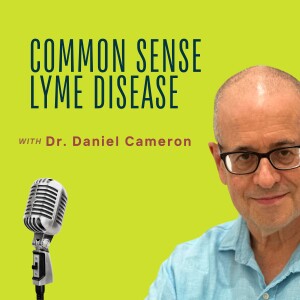
- Podcast Features
-
Monetization
-
Ads Marketplace
Join Ads Marketplace to earn through podcast sponsorships.
-
PodAds
Manage your ads with dynamic ad insertion capability.
-
Apple Podcasts Subscriptions Integration
Monetize with Apple Podcasts Subscriptions via Podbean.
-
Live Streaming
Earn rewards and recurring income from Fan Club membership.
-
Ads Marketplace
- Podbean App
-
Help and Support
-
Help Center
Get the answers and support you need.
-
Podbean Academy
Resources and guides to launch, grow, and monetize podcast.
-
Podbean Blog
Stay updated with the latest podcasting tips and trends.
-
What’s New
Check out our newest and recently released features!
-
Podcasting Smarter
Podcast interviews, best practices, and helpful tips.
-
Help Center
-
Popular Topics
-
How to Start a Podcast
The step-by-step guide to start your own podcast.
-
How to Start a Live Podcast
Create the best live podcast and engage your audience.
-
How to Monetize a Podcast
Tips on making the decision to monetize your podcast.
-
How to Promote Your Podcast
The best ways to get more eyes and ears on your podcast.
-
Podcast Advertising 101
Everything you need to know about podcast advertising.
-
Mobile Podcast Recording Guide
The ultimate guide to recording a podcast on your phone.
-
How to Use Group Recording
Steps to set up and use group recording in the Podbean app.
-
How to Start a Podcast
-
Podcasting
- Podcast Features
-
Monetization
-
Ads Marketplace
Join Ads Marketplace to earn through podcast sponsorships.
-
PodAds
Manage your ads with dynamic ad insertion capability.
-
Apple Podcasts Subscriptions Integration
Monetize with Apple Podcasts Subscriptions via Podbean.
-
Live Streaming
Earn rewards and recurring income from Fan Club membership.
-
Ads Marketplace
- Podbean App
- Advertisers
- Enterprise
- Pricing
-
Resources
-
Help and Support
-
Help Center
Get the answers and support you need.
-
Podbean Academy
Resources and guides to launch, grow, and monetize podcast.
-
Podbean Blog
Stay updated with the latest podcasting tips and trends.
-
What’s New
Check out our newest and recently released features!
-
Podcasting Smarter
Podcast interviews, best practices, and helpful tips.
-
Help Center
-
Popular Topics
-
How to Start a Podcast
The step-by-step guide to start your own podcast.
-
How to Start a Live Podcast
Create the best live podcast and engage your audience.
-
How to Monetize a Podcast
Tips on making the decision to monetize your podcast.
-
How to Promote Your Podcast
The best ways to get more eyes and ears on your podcast.
-
Podcast Advertising 101
Everything you need to know about podcast advertising.
-
Mobile Podcast Recording Guide
The ultimate guide to recording a podcast on your phone.
-
How to Use Group Recording
Steps to set up and use group recording in the Podbean app.
-
How to Start a Podcast
-
Help and Support
- Discover

Inside Lyme Podcast with Dr. Daniel Cameron
Health & Fitness:Medicine

Milestones in Lyme Disease Research and Treatment
Welcome! Today, we’re exploring the key milestones in Lyme disease research and treatment.
I had a 57-year-old patient who remained chronically ill after being diagnosed and treated for Lyme disease. He didn't realize that a persistent tick-borne infection could explain his chronic illness. He was treated with a combination of azithromycin and atovaquone for the persistent infection, and today, he is doing well.
He was surprised that, despite the milestones in Lyme disease research, he wasn't aware that a persistent infection could lead to his chronic illness. So, let's take a closer look at these milestones.
1. 1977: Discovery of Lyme Disease
Our story begins in 1977 in Lyme, Connecticut. A cluster of children and adults were diagnosed with what was initially thought to be juvenile rheumatoid arthritis. This event marked the identification of Lyme disease as a distinct illness and the start of modern Lyme disease awareness."
2. 1982: Discovery of the Bacterium Responsible for Lyme Disease
In 1982, Dr. Willy Burgdorfer identified Borrelia burgdorferi, the bacterium responsible for Lyme disease. This discovery was a major milestone, enabling more precise identification and treatment of the disease.
3. 1990: Recognition of Chronic Lyme Disease
By 1990, chronic Lyme disease, with its long-term and persistent symptoms, was officially recognized. This led to more comprehensive treatment protocols and increased awareness of the disease's chronic nature.
4. 1995: Discovery of Babesia microti
In 1995, Babesia microti was identified as a co-infection transmitted by the same ticks that carry Lyme disease. This highlighted the complexity of tick-borne illnesses and the need for integrated treatment approaches.
5. 2000: Publication of IDSA and ILADS Guidelines
The year 2000 saw the publication of treatment guidelines by both the Infectious Disease Society of America (IDSA) and the International Lyme and Associated Diseases Society (ILADS). These guidelines showcased different approaches to treating Lyme disease, marking another significant milestone.
6. Ongoing Research and Future Milestones
Research is ongoing, and we look forward to future milestones that could lead to breakthroughs in diagnosis and treatment. Studies on biofilms, persisters, and tick-borne co-infections may enable doctors to develop treatment plans that significantly improve patient outcomes.
Conclusion
Understanding these milestones helps us appreciate the progress made in the fight against Lyme disease. With continued research and dedication, we move closer to effective management and potential cures. Thank you for watching, and stay tuned for more insights on Lyme disease."
More Episodes
 2024-08-27
2024-08-27
 2024-08-27
2024-08-27
 2023-08-06
2023-08-06
 2023-08-06
2023-08-06
 2023-08-06
2023-08-06
 2023-07-25
2023-07-25
 2023-04-12
2023-04-12
 2023-02-18
2023-02-18
 2023-02-17
2023-02-17
 2023-02-17
2023-02-17
 2023-02-17
2023-02-17
 2023-02-17
2023-02-17
 2023-02-17
2023-02-17
Create your
podcast in
minutes
- Full-featured podcast site
- Unlimited storage and bandwidth
- Comprehensive podcast stats
- Distribute to Apple Podcasts, Spotify, and more
- Make money with your podcast
It is Free
- Privacy Policy
- Cookie Policy
- Terms of Use
- Consent Preferences
- Copyright © 2015-2025 Podbean.com



